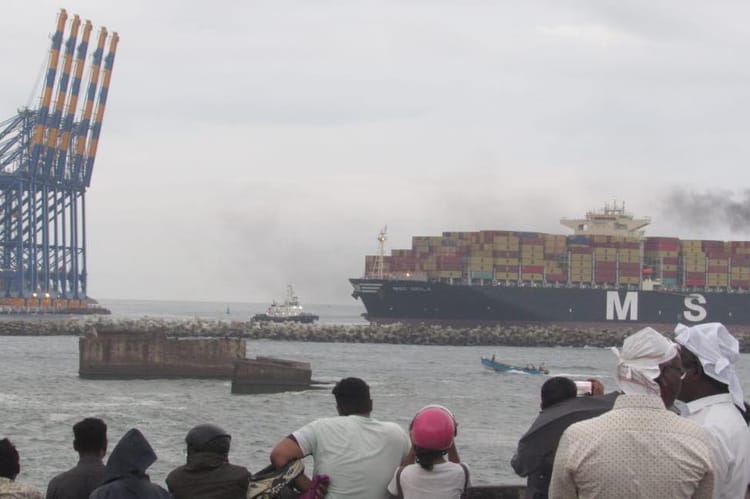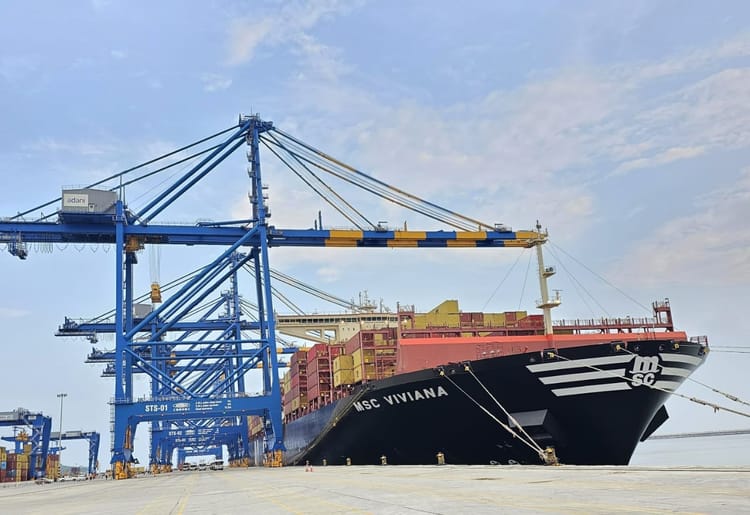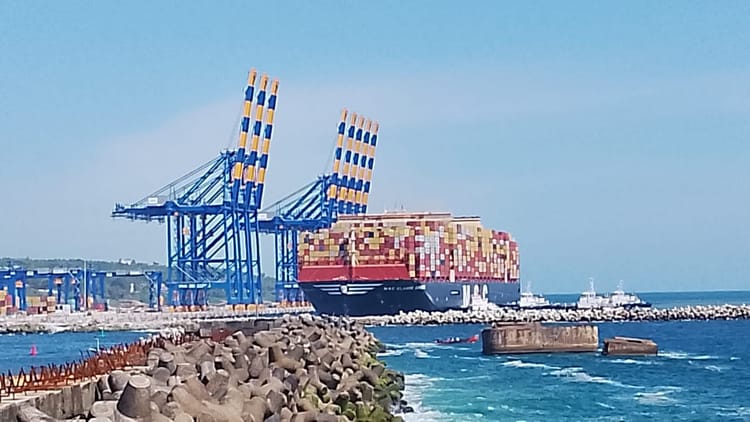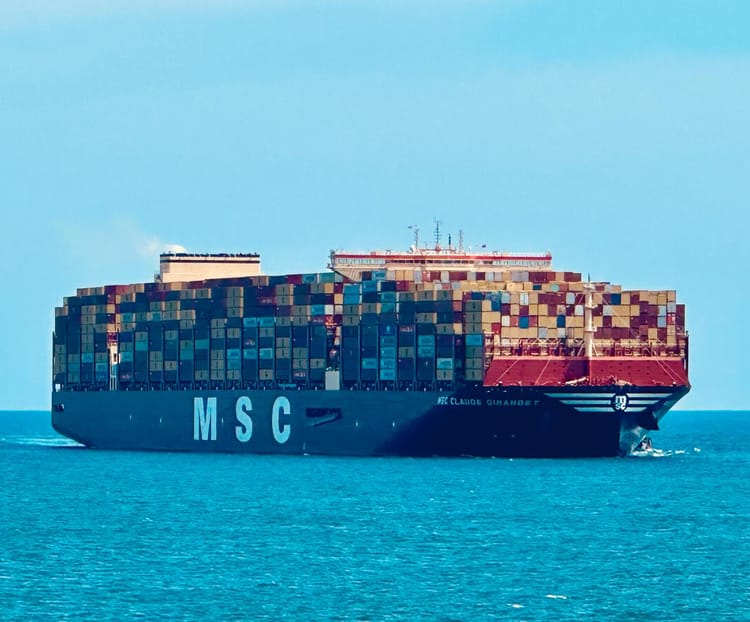Coastal Correction: India and Saudi Arabia's Maritime Makeover!
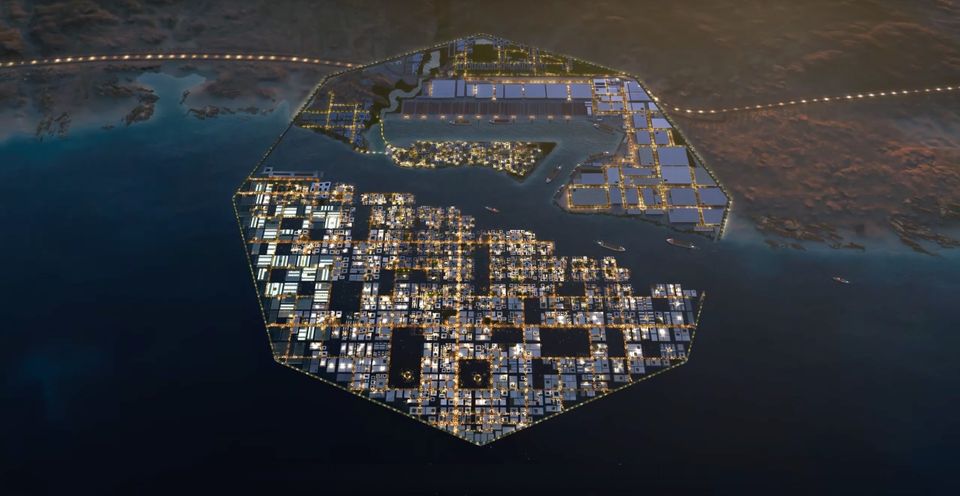
After 100+ days of protests against the Vizhinjam (8.3932°N, 77.0046°E) Motherport project in India, a friend in Saudi Arabia called me to enquire about the same. During the conversation, he mentioned some of the condescending questions he regularly faces from his Saudi friends : “What is it with India that nothing gets done on time? Isn't your port project stalled now'”? Perhaps the global coverage of anti-port protests would have taken the news from Thiruvananthapuram to the Saudi citizens.
Well, let’s pose some questions to our Saudi friends. Are you aware of the killing of Abdul Rahim Al Huwaiti in Tabuk province near the Red sea? Did you read anywhere that three of his relatives were sentenced to death? You may not even know that 20,000 Huwaitis were forcibly evacuated without decent compensation, as sparingly reported by a handful of media outlets. Many things that happen in many countries are not known to both natives and foreigners. But even a minute development in India, finds a place in the global news. That’s the freedom in India which many other countries deny, and the world enjoys!
Not a soul has been forcibly evicted for the construction of India's first mother port project, Vizhinjam. I have met numerous people who are willing to offer their land in exchange for handsome compensation. This interest is primarily based on the fact that many that previously gave up their land received compensation beyond their expectations. These are some of the people who lead a counter-protest demanding the earliest completion of the project. I am sure my Saudi friend was unaware of this. There are many other aspects that he still needs to understand.
Oxagon, the ambitious project of Saudi Arabia led by Indian Vishal Wanju, is controversial at least in the Tabuk province of Saudi Arabia. Oxagon is a component of the Saudi's ambitious "NEOM" project. The 26,500 sq km dream city is being developed at the edge of the Red Sea, and includes projects such as Sindalah, Trojena, The Line, and Morphosis, which are part of Vision 2030. The focus of this article is not on the controversies surrounding the project, but rather on its impressive features. I have often wondered why Saudi Arabia has not yet fully exploited the trade potential of the bustling Red Sea. However, Dubai, which lies several miles away from the main shipping lane, is a major magnet for global trade ships. The Oxagon project is Saudi Arabia's answer to this question. Saudi Arabia, known for its vast deserts, has no shortage of land, but is building its dream city on the sea. Oxagon is the world's first floating industrial city!
Oxagon is building a port with a container capacity of 9 million TEU. Most of this cargo is expected to come from the Floating Industry Project. Renewable Energy, Autonomous and sustainable mobility, Modern construction, Water Innovation, Sustainable food production, Health and well-being technology, and Digital are the seven major industries to be started here. Companies such as Air Products, ACWA Power, Gulf Modular International, Hyzon Motors, and Desert Technologies have already shown interest. The promoters believe that the world's best minds and industries will come to Oxagon. That is why the Saudi government is creating a manufacturing ecosystem that is considered to be world-class. By 2030, when the NEOM projects are completed, it is estimated that 380,000 jobs will be created, and 9 million people will settle here. It is also estimated to contribute about $48 billion annually to the country's GDP.
Let us segue into some geography lessons on Saudi Arabia. Saudi has an area of 2.15 million sq km, and a population of only 35 million. The important question here is, why did they choose the controversial Red Sea coast when they already possess enough land area to start any industry without opposition? The answer is simple: 12% of the world's cargo pass through the Red Sea. Even without this advantage, Dubai handled 13.5 million TEU in 2020, while Saudi's Jeddah port on the Red Sea managed only 4.43 million TEU. This is what changed the perspective of the Saudi rulers. Opening and operationalising a port on a major shipping route would not guarantee anything; it must also become a manufacturing hub. In what can be considered a major strategic move, Saudi Arabia has decided to gather investors in the middle of the ocean, considering that the chances of convincing investors with unfavourable weather, which rises up to 43 degrees in its land, would be a mammoth task. That is how the concept of a floating industrial city was formed. Saudi has designed Oxagon in a way that it enables manufacturing in mid-ocean, and export from the shores . With this Saudi dream project taking shape in the Red Sea, which is only 190 miles wide, we need to introspect whether India is using any of the benefits of the 70.56 million sq km Indian Ocean? A total of 166 million TEU of cargo passed through 28 countries in 2017. By 2025, 16% of world trade will pass through the Indian Ocean. It already carries half of global container trade and two-third of oil. It is important to study and understand Saudi's Oxagon project, particularly to gauge if India has any potential to use these opportunities.
Despite having access to 1,760 km of coastline in the Red Sea and 560 km in the Arabian Sea, Saudi Arabia has not yet tried to utilise it effectively. This reflects in its position in the global port ranking. Until now, they have been booming through the oil business. They have realised that 'new future' projects like NEOM will have to be implemented if they are to overcome the increasing pressures and restrictions in the oil market. India, with its 7,500 km of coastline, is also on a maritime course correction through the Vizhinjam project. It is important that India reclaims the lost potential through this transshipment port and the immense opportunities that it offers.
The post was originally written by Elias John in Malayalam and later translated to English
This article © 2023 by Motherport News is licensed under CC BY 4.0
